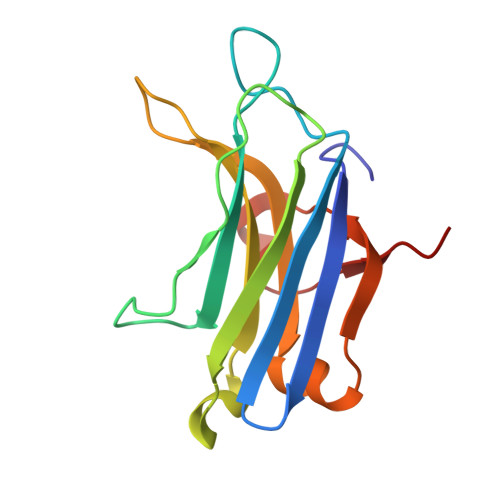Structural and mechanistic insights into the association of PKCalpha-C2 domain to PtdIns(4,5)P2.
Guerrero-Valero, M., Ferrer-Orta, C., Querol-Audi, J., Marin-Vicente, C., Fita, I., Gomez-Fernandez, J.C., Verdaguer, N., Corbalan-Garcia, S.(2009) Proc Natl Acad Sci U S A 106: 6603-6607
- PubMed: 19346474
- DOI: https://doi.org/10.1073/pnas.0813099106
- Primary Citation of Related Structures:
3GPE - PubMed Abstract:
C2 domains are widely-spread protein signaling motifs that in classical PKCs act as Ca(2+)-binding modules. However, the molecular mechanisms of their targeting process at the plasma membrane remain poorly understood. Here, the crystal structure of PKCalpha-C2 domain in complex with Ca(2+), 1,2-dihexanoyl-sn-glycero-3-[phospho-L-serine] (PtdSer), and 1,2-diayl-sn-glycero-3-[phosphoinositol-4,5-bisphosphate] [PtdIns(4,5)P(2)] shows that PtdSer binds specifically to the calcium-binding region, whereas PtdIns(4,5)P(2) occupies the concave surface of strands beta3 and beta4. Strikingly, the structure reveals a PtdIns(4,5)P(2)-C2 domain-binding mode in which the aromatic residues Tyr-195 and Trp-245 establish direct interactions with the phosphate moieties of the inositol ring. Mutations that abrogate Tyr-195 and Trp-245 recognition of PtdIns(4,5)P(2) severely impaired the ability of PKCalpha to localize to the plasma membrane. Notably, these residues are highly conserved among C2 domains of topology I, and a general mechanism of C2 domain-membrane docking mediated by PtdIns(4,5)P(2) is presented.
- Department of Bioquímica y Biología Molecular A, Facultad de Veterinaria, Universidad de Murcia, 30100 Murcia, Spain.
Organizational Affiliation:



















